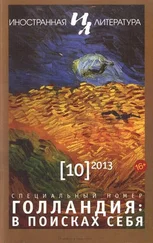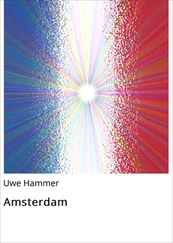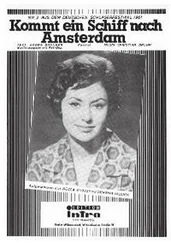Герман Кох - Amsterdam Noir
Здесь есть возможность читать онлайн «Герман Кох - Amsterdam Noir» весь текст электронной книги совершенно бесплатно (целиком полную версию без сокращений). В некоторых случаях можно слушать аудио, скачать через торрент в формате fb2 и присутствует краткое содержание. Город: New York, Год выпуска: 2018, ISBN: 2018, Издательство: Akashic Books, Жанр: Детектив, на английском языке. Описание произведения, (предисловие) а так же отзывы посетителей доступны на портале библиотеки ЛибКат.
- Название:Amsterdam Noir
- Автор:
- Издательство:Akashic Books
- Жанр:
- Год:2018
- Город:New York
- ISBN:978-1-61775-685-6
- Рейтинг книги:4 / 5. Голосов: 1
-
Избранное:Добавить в избранное
- Отзывы:
-
Ваша оценка:
- 80
- 1
- 2
- 3
- 4
- 5
Amsterdam Noir: краткое содержание, описание и аннотация
Предлагаем к чтению аннотацию, описание, краткое содержание или предисловие (зависит от того, что написал сам автор книги «Amsterdam Noir»). Если вы не нашли необходимую информацию о книге — напишите в комментариях, мы постараемся отыскать её.
Amsterdam Noir — читать онлайн бесплатно полную книгу (весь текст) целиком
Ниже представлен текст книги, разбитый по страницам. Система сохранения места последней прочитанной страницы, позволяет с удобством читать онлайн бесплатно книгу «Amsterdam Noir», без необходимости каждый раз заново искать на чём Вы остановились. Поставьте закладку, и сможете в любой момент перейти на страницу, на которой закончили чтение.
Интервал:
Закладка:
But lions don’t discuss.
They don’t wear ankle monitors, either.
This was my life, squeezed together tightly in a couple of seconds.
And a couple of seconds was all the time he had left to sniff around in my life.
Thirty seconds, tops — it almost never takes me longer than that.
Salvation
by Simon de Waal
Translated by Maria de Bruyn
Red-Light District
It’s just after midnight, a warm spring night. Waldemar, a thickset man of fifty-eight, is standing on a bridge in the heart of Amsterdam’s Red-Light District. He’s carelessly stuffed his dark wrinkled shirt into his stained pants after rolling up the shirtsleeves a couple of times. The pants’ legs are too long and the cuffs, which drag across the cobblestones when he walks, are frayed. He leans forward against the handrail of the Bosshardt Bridge, named after the Salvation Army major who, for decades, helped the neighborhood’s weak and damned souls without worrying about their pasts.
Waldemar rocks slowly back and forth, to and fro, mumbling something incomprehensible under his breath. A tourist, Hiroki Ota, wearing a wool cap with flaps that say Amsterdam , stops a few yards away. He’s hiding a small camera in the palm of his hand and waiting for the moment when Waldemar’s worn-down soles lose their grip on the asphalt and the crazy old street person plunges headfirst into the murky water. He wouldn’t be the first simpleton in Amsterdam to suffer that fate and drown, but when the man hasn’t fallen in after rocking perhaps fifteen times, Hiroki gives up and walks on, disappointed. He disappears into the knot of people pushing their way through the busy Molensteeg.
Red lights and garish neon ads are reflected in the canal’s still water. Swans float by, slowly, elegantly, and drift beneath the bridge. They come to a halt in front of the Casa Rosso nightclub, vain and almost haughty as they wait for the bread that is thrown to them every evening. Crowds of tourists take photos of the unexpected and paradoxical scene: stately white lines of impalpable beauty on expansive black water, lit up by the simultaneously alluring yet merciless red neon lights of the prostitutes’ claustrophobic windows.
Waldemar has seen it all a hundred times. Silently he straightens his back and leaves the bridge, his gaze turned deeply inward, his bearing making him unapproachable; he thinks of his daughter, whom he’s missed for so long. He looks up only when he reaches the next corner. Rowdy students, unsuspecting tourists, a boisterous group of young women celebrating a bachelorette party all pass him by. He turns a corner into a passageway that leads to the next canal. No red lights here for a change, but a large, busy snack bar where a drunk boy with close-cropped hair and a dangling lower lip fruitlessly tries to insert a coin into a slot so he can open the vending machine’s window, within which an assortment of typical Dutch treats beckon. Behind the vending machine, a sweaty bearded man appears with a tray of fried snacks; with practiced movements, he quickly fills all the empty windows with freshly prepared food. Bold gulls swoop low through the street, waiting for a moment of relative quiet in the passageway so they can snatch up any fallen morsels. The boy takes a bite of his croquette, which is still too hot. Cursing under his breath, he keels forward, gasping for relief, and the food falls out of his mouth. He staggers on angrily, waving the hot croquette in his unsteady hand.
Emerging from the passageway, Waldemar comes out onto the next canal, the Oudezijds Voorburgwal. This has quite a different, almost peaceful look, dominated by the monumental Old Church, Amsterdam’s oldest building, which dates back to the year 1280, its tower illuminated in the evenings. A beacon of hope above a square kilometer of misery, which is how the local police have characterized the Red-Light District for years. Waldemar saunters past the church. The dark-skinned prostitutes preside over their domain in the small alleys surrounding the stately building, just like every other group that has its own space in the district: the S&M ladies, the Thai and Filipino transsexuals, the Chinese, the Eastern Europeans. And all of that spiced up by dozens of busy coffee shops, by a café where the Hells Angels meet, by the headquarters of the Salvation Army. Belief and sin go hand in hand here.
Waldemar knows it all. The entrance to the small passageway at the Oudezijds Voorburgwal is dark and oppressive, only illuminated halfway down by the red neon lights over the prostitutes’ doors. Waldemar assumes his usual spot across from the passage, a place where he can look into it without calling attention to himself. The world passes him by; it’s a day just like the hundreds of others he has spent there. And here comes Aaron, a man in his fifties, sporting an extravagant dark-gray beard and a velvet suit that could belong either to an old-time town crier or a member of Rembrandt’s Night Watch. A dashing hat with a long feather rests atop his head. He carries a wooden staff with a pennant, so he can be easily spotted in the busy crowd. This way, the tourists he is guiding can follow him with no trouble. Waldemar steps back a bit to make way for the guide and his entourage.
“We’ll begin here,” announces Aaron in practiced English. “This, esteemed public, is not only the Red-Light District’s narrowest street; it is the narrowest street in all of Amsterdam. Exactly three feet wide! Only three feet! The name is... De Trompettersteeg. Yeah, you try to pronounce that.” He falls silent, because he knows that laughter and murmuring will arise as the tourists actually try to say the passageway’s name.
An overly ambitious man with a face ruddy from drink begins to cough as he tries to push the last, so undeniably Dutch, syllable out of his throat.
“That G sound,” Aaron finally continues, as the exuberant group quiets down, “saved lives during the Second World War. The Germans couldn’t pronounce it, so the Resistance forced traitors and infiltrators to say the word Scheveningen , where the Sch sounds just like the G. Those who couldn’t do it properly were Germans and therefore risked losing their lives. So remember the name Scheveningen.”
Waldemar shakes his head benevolently as the flush-faced man is thumped roundly on his back after struggling to say the new word.
“Let’s go on,” instructs Aaron. “After we emerge through the passageway, be careful: the ladies are here to earn money, not to be ogled. And do you remember what I said at the start of the tour?”
The sightseers respond like good children on a school trip: “Don’t take photos!”
Waldemar mumbles the words along with them, checking his watch. He knows that this is the last group that will be led through the district tonight. The neighborhood is growing calmer, more shadowy, the night is asserting itself.
Aaron beckons again, and someone from the herd ventures a hesitant first step into the dark passageway, toward the red-lit and seductive temptations. “I’ll follow behind and continue my narration.”
“It’s like entering the gates of hell, where purgatory awaits you,” says the red-faced man, and his words hurt Waldemar. One by one, the tourists disappear into the passage. Aaron brings up the rear, his feather swaying above their heads, his staff tapping on the cobblestones.
“Why don’t you tell them what happened there!” yells Waldemar, but no one hears him because no sound issues from his mouth.
No fucking photo’s!! is misspelled on the passage’s wall; the big graffitied letters are meant to be artistic, but their message is clear. Of course, Aaron’s herd can’t help themselves. As soon as they reach the windows, they gape at the young women. The red lights hide all their flaws, and their white lingerie, which really doesn’t cover anything, shines brightly. The tourists stare and stare and stare.
Читать дальшеИнтервал:
Закладка:
Похожие книги на «Amsterdam Noir»
Представляем Вашему вниманию похожие книги на «Amsterdam Noir» списком для выбора. Мы отобрали схожую по названию и смыслу литературу в надежде предоставить читателям больше вариантов отыскать новые, интересные, ещё непрочитанные произведения.
Обсуждение, отзывы о книге «Amsterdam Noir» и просто собственные мнения читателей. Оставьте ваши комментарии, напишите, что Вы думаете о произведении, его смысле или главных героях. Укажите что конкретно понравилось, а что нет, и почему Вы так считаете.












